Many people believe that there are lots of brown recluse spiders in Southern California. This is because some residents were bitten by spiders and they thought it was a brown recluse spider.
Unfortunately, there also have been some medical misdiagnoses. To add to the confusion, some spiders look like them, too.
Are there brown recluse spiders in Southern California? Contrary to what most Californians believe, there has been no confirmed population of brown recluse spiders in Southern California. In fact, spider experts have only collected less than ten of this spider species in the entire state for the past several decades.
Unlike most spider species, brown recluse spiders are not usually seen by the public. These spiders are venomous, and lots of people are afraid of them.
This is also why people find it more difficult to confirm if a spider is a brown recluse or not. Fortunately, this comprehensive guide makes it very simple for everybody.
Table of Contents
What Do Brown Recluse Spiders Look Like?

Brown recluse spiders are orange, tan, or brown with a uniform light color on their body and legs. This means that they have no bands or stripes.
They have a violin shape on their cephalothorax (the part of the body where their legs are attached). The neck of the violin is pointing toward their abdomen.
Scientifically known as Loxosceles reclusa, the brown recluse spider has only six eyes instead of eight.
Also sometimes called fiddleback spiders, brown recluse spiders look like cellar spiders (Pholcidae) because they have the same violin shape. But if you take a closer look, cellar spiders have the usual eight eyes.
Their abdomen can either be cream or dark brown, depending on the food they last ate.
Nonetheless, they cannot have two different colors at the same time. But if you spot some discoloration at the center of their bodies, it is the location of their heart. You can easily notice it because these spides have very thin skin.
How Big Are Brown Recluse Spiders?
Brown recluse spiders have an average length of about 3/8 inches (9.5 mm). However, some of them can grow between 1/4 and 1/2 inches (6.35 and 12.7 mm) long.
But once they spread their legs, this spider species can be as big as a quarter dollar or about an inch in diameter. Females are a bit bigger than males.
Where Do Brown Recluse Spiders Live?
Brown recluse spiders usually live outdoors, especially in woodpiles, under huge rocks, and inside the loose bark of dead trees. These spiders rarely enter houses but may live close to dry areas close to humans.
Once they do, they may live in attics, basements, and garages, especially under garbage cans and other debris.
Where Do Brown Recluse Spiders Hide?
Brown recluse spiders are not attracted to lights and moisture. But they tend to hide in dark and undisturbed places in houses during the day.
Indoors, these six-legged creatures usually hide in cracks and crevices, behind furniture and picture frames, and inside rubber tires, cardboard boxes, as well as other crawl spaces.
What Do Brown Recluse Spiders Eat?
Just like most spider species, brown recluse spiders eat a wide variety of soft-bodied insects, dead or alive. This includes crickets, cockroaches, flies, moths, silverfish, and even their fellow spiders.
But unlike most spiders, they don’t trap their prey on their webs. Instead, these nocturnal creatures hunt for food at night.
What Eats Brown Recluse Spiders?
Large and small birds eat spiders, including brown recluse spiders. Among the other natural predators of spiders are lizards, praying mantis, spider wasps, scorpions, crickets, centipedes, and monkeys.
As mentioned above, spiders also eat each other. This cannibalism behavior is very common to most spider species.
How Can You Correctly Identify a Brown Recluse Spider?
Identifying brown recluse spiders through the violin-shaped marking on their back is not enough. As mentioned earlier, cellar spiders also have this mark.
On the other hand, spitting spiders (Scytodidae) also have six eyes but they have no violin mark. With that, here is how to identify brown recluse spiders correctly:
- Dark violin mark at the head and thorax
- Three pairs of eyes are arranged in a semi-circle pattern, one in the middle and the one pair on each side of their head.
- Very fine hairs on legs, but without spines and stripes
- Not bigger than 1/2 inch
- Webs are hidden, not being used to capture prey.
Which States Have Brown Recluse Spiders?
Brown recluse spiders are native to the United States but are mostly found in the south-central states. It was first described in 1940 in Texas. From there, these spider species were gradually distributed across some states.
But so far, below are the 16 states that have an established population of brown recluse spiders:
- Alabama
- Arkansas
- Georgia
- Illinois
- Indiana
- Iowa
- Kansas
- Kentucky
- Louisiana
- Mississippi
- Missouri
- Nebraska
- Ohio
- Oklahoma
- Tennessee
- Texas
There were a few isolated incidents where brown recluse spiders have been spotted in other states. This includes Arizona, California, Florida, North Carolina, Pennsylvania, Washington, and Wyoming.
Nevertheless, the sightings were believed to be due to accidental transport, and no breeding sites were found.
What Time of Year Are Brown Recluse Spiders Most Active?
Depending on the location, adult brown recluse spiders usually mate from April to early July. Females can produce up to 5 egg sacs, and each of them may contain about 50 eggs.
Nymphs or spiderlings may reach maturity in less than a year. But in general, brown recluse spiders are most active from March to October.
What Does a Brown Recluse Look Like in California?
As previously mentioned, brown recluse spiders don’t live in California. Instead, Californians saw other recluse spider species that are native to that state.
In the past decades, some residents have submitted samples of spiders that look like brown recluse spiders. However, these spiders belong to other spider species.
The common California spiders that look like brown recluse spiders are desert recluse spiders, spitting spiders, woodlouse hunter spiders, brown widows, and western black widows.
Some of them are highly venomous, while others are not dangerous at all. Further descriptions of them are explained below.
What Spiders Are Poisonous in Southern California?
Generally speaking, spiders are not poisonous because only a few people eat them. Instead, they have venoms with different levels of toxicity.
Despite having no brown recluse spiders in Southern California, other venomous spiders are also roaming around in the area. Here are only some of them:
1. Desert Recluse Spiders
Scientifically known as Loxosceles deserta, desert recluse spiders are commonly found in the Mojave Desert, Sonoran Desert, San Joaquin Valley, and some parts of Mexico.
They also have a violin mark on their back, but it has lighter color. Their venom has an equal potency with that of a brown recluse spider bite.
2. South American Violin Spiders
Scientifically known as Loxosceles laeta, the South American violin spider is usually found in small areas in Southern California. This includes Alhambra, Monterey Park, San Gabriel, and the Sierra Madre.
Also called Chilean recluse spiders, this spider species is highly venomous, but they rarely enter houses.
3. Brown Widow Spiders
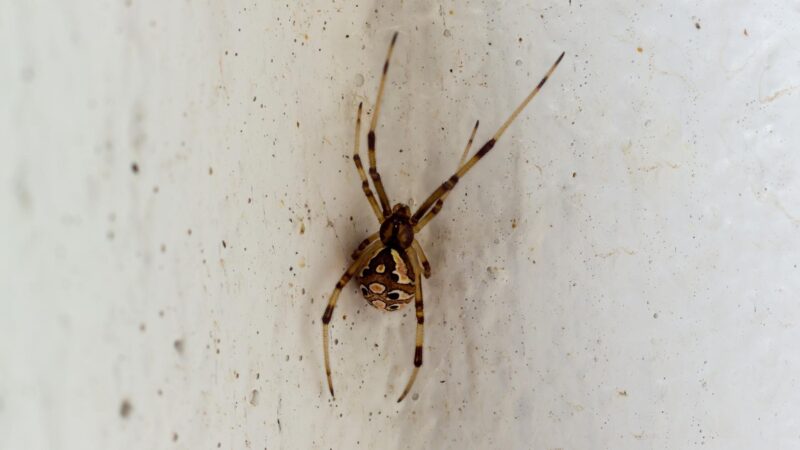
Scientifically known as Latrodectus geometricus, the brown widow spider was believed to have reached Southern California in the early part of the 21st century. Although the public is concerned about the high toxicity level of their bites, brown widow spiders are not considered dangerous nor should be of medical concern.
4. Western Black Widows

Scientifically known as Latrodectus Hesperus, western black widows are very common in populated areas in California. The toxicity level of their venom is higher than that of brown widows, but it is not enough to harm humans.
Native black widow spider bites are also rare, and antivenom is readily available.
5. False Black Widows
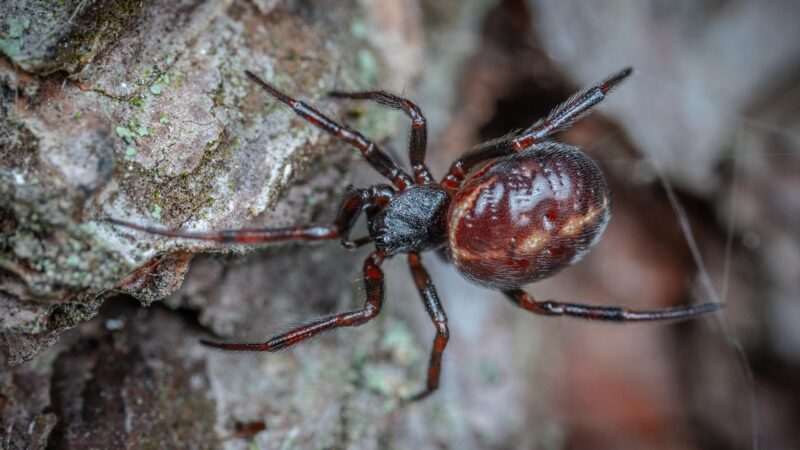
Scientifically known as Steatoda grossa, false black widows are not true spiders. Although they look like widow spiders, false widows are slightly smaller and more common in houses.
A false black widow bite also has venom, but it is only mild and tolerable. Pain and symptoms are almost the same as a yellowjacket sting.
What Spiders Look Like a Brown Recluse?
Brown recluse spiders are usually mistaken for other spider species. Most of them have similar patterns to that of brown recluse spiders, while some also have six eyes.
Unfortunately, most non- arachnologists hardly see the difference. To help you out, here are some spiders that look like brown recluse spiders.
1. Spitting Spiders
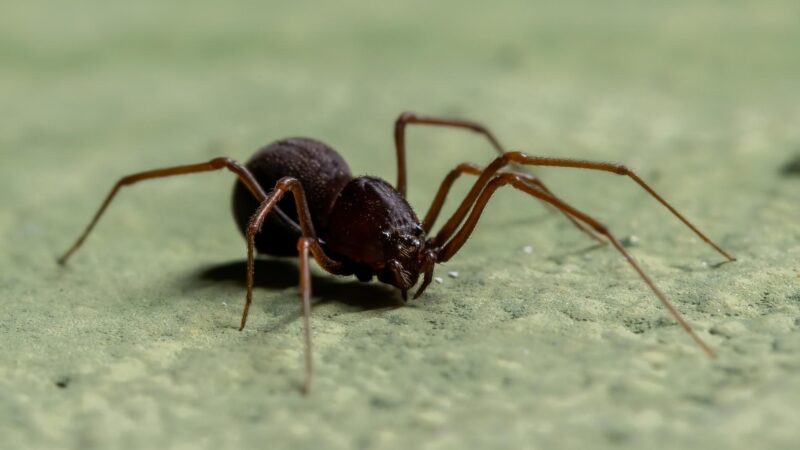
Spitting spiders belong to the Scytodidae family. Just like brown recluse spiders, they have six eyes that are arranged in the same manner.
Although these two spider species are closely related, spitting spiders have lots of black markings on their bodies and legs. They have long, thin legs, which make them crawl slowly.
2. Woodlouse Hunter Spiders
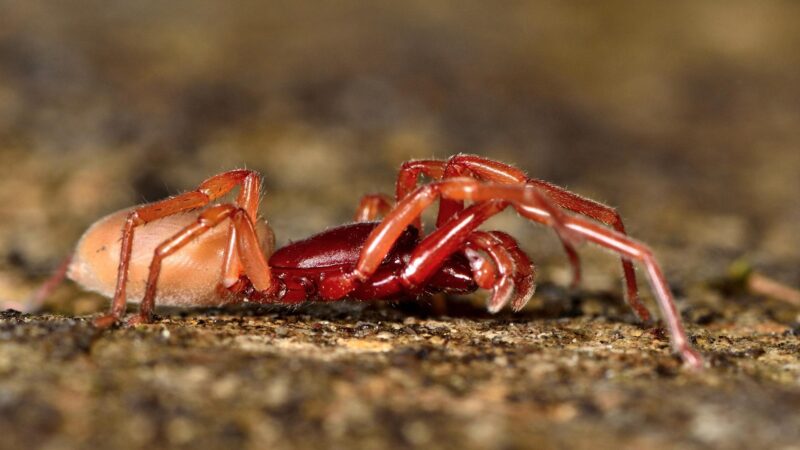
Scientifically known as Dysdera crocata, woodlouse hunter spiders also have six eyes but are in an oval arrangement – two groups of three eyes or a triad.
They also have uniformly colored reddish-brown bodies and legs, and a light brown or dirty white abdomen. However, their jaws are bigger than that of brown recluse spiders.
3. Funnel Weaver Spiders
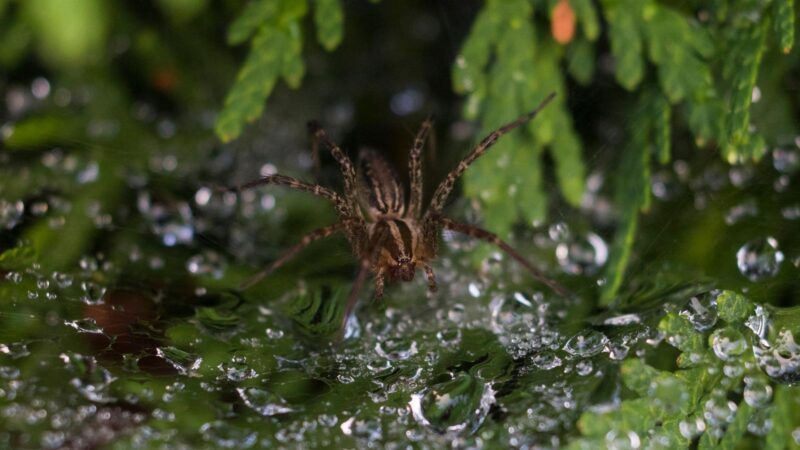
Funnel weaver spiders are commonly found indoors, especially between late summer and early fall. Also called Hobo spiders, this spider species appears to have fangs like the brown recluse spiders.
But instead, they are called pedipalps, which are only used for mating. Hobo spiders also have 8 eyes and banded legs.
4. Cellar Spiders
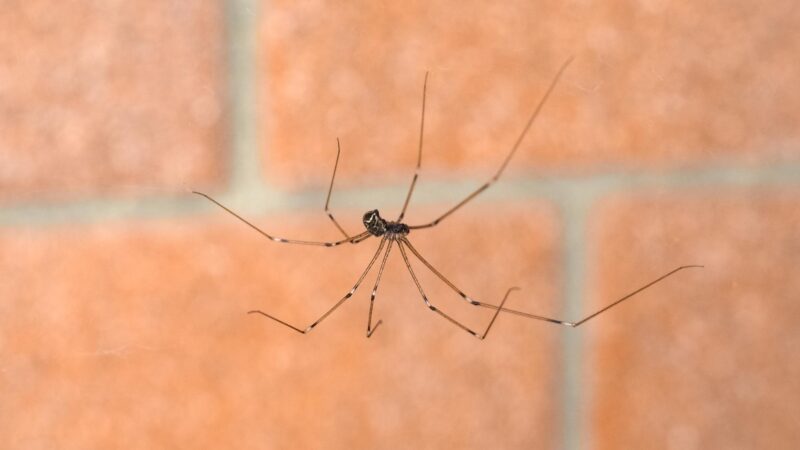
Cellar spiders are categorized into two types – the short-bodied and the long-bodied. Both of them somehow have a similar violin pattern as brown recluse spiders.
But if you take a closer look, cellar spiders have the usual eight eyes. A pair of eyes is in the middle, while the six eyes are in a group of 3 on each side.
5. Wolf Spiders
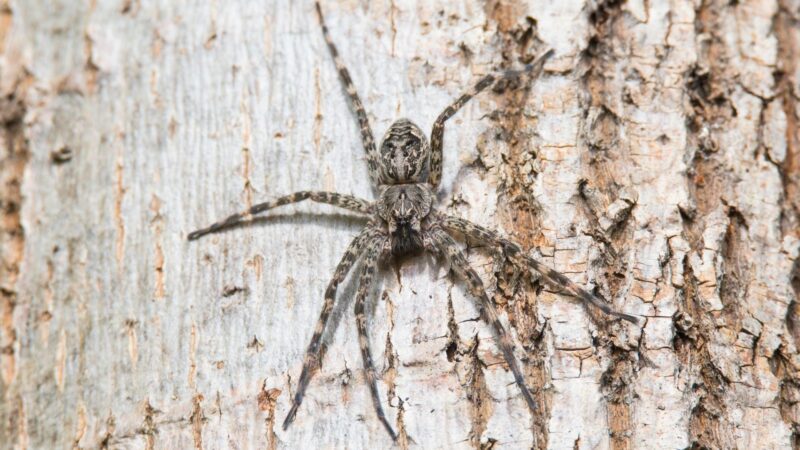
Scientifically known as Lycosidae, wolf spiders have dark patches on their body, and they don’t catch prey on their webs. This is why they are mistaken for brown recluse spiders.
However, these spiders have eight eyes. A pair of eyes is on top of their head, a huge pair is in the middle, and four eyes are above their mouth.
6. Running Crab Spiders
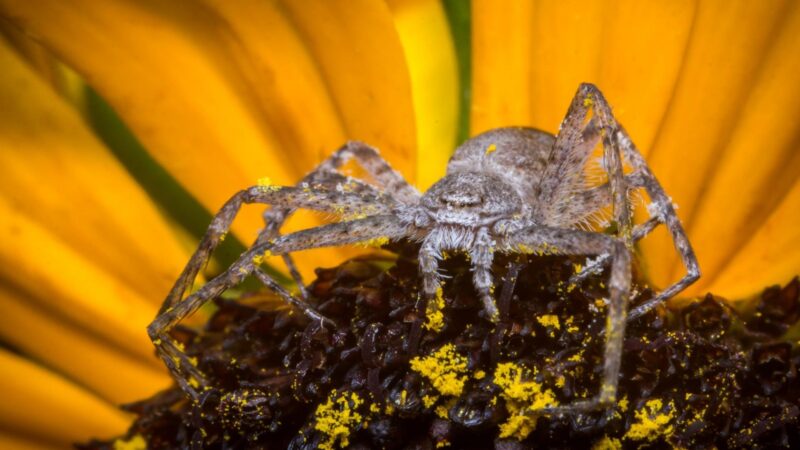
Scientifically known as Philodromidae, running crab spiders have their second pair of legs being the longest.
Although most of them have a violin mark like the brown recluse spiders, all of them have eight eyes that are arranged in two rows. Their violin-shape marks are also on their abdomen, not on their cephalothorax.
What Kills Brown Recluse Spiders?
Brown recluse spiders are not easy to kill since they are very good at hiding. But aside from their natural predators, you can use some tools or substances that can kill them.
Some of them may not have a quick effect, though. But with proper use and patience, they can be very effective. Here are some of them:
- Vacuum cleaner
- Sticky traps
- White vinegar with water
- Bleach solution
- Boric acid
- Diatomaceous earth (DE)
- Residual spray
- Residual dust
How to Get Rid of Brown Recluse Spiders in Your House?
Brown recluse spider bites can be medically significant to humans. Although these spiders are not aggressive, you should take action once you see them in your home.
Otherwise, you or your children may accidentally provoke them to bite. So, here are some ways to get rid of brown recluse spiders in your house:
- Use a vacuum cleaner with a crevice tool such as Shark NV352 Navigator Lift Away Upright Vacuum. This is not only to get into hard-to-reach areas but also to make sure these spiders will die once you suck them.
- Place glue traps such as RESCUE! Spider Traps in areas where brown recluse spiders could be hiding. They can also trap other spider species.
- Mix one part vinegar and one part water and spray it directly on them. For better results, use pure vinegar instead.
- Mix one part of bleach and three parts of water and spray it directly on them. Note, however, that bleach is not a registered insecticide and is harmful to humans and on some surfaces.
- Sprinkle boric acid in places where these spiders typically travel. Boric acid kills spiders in two ways – damaging their exoskeleton and once consumed.
- Apply food-grade diatomaceous earth (DE) on cracks and crevices where spiders are crawling. DE does not kill spiders on contact but will penetrate their exoskeleton, causing them to eventually die. To make it more effective, sprinkle DE evenly and in dry places only.
How to Keep Brown Recluse Spiders Out of Your House?
Brown recluse spiders may enter your house once they sense sources of food. So far, the best way to keep these spiders out of your house is to prevent them from entering.
This includes proper sanitation, removing clutter and possible hiding places, and sealing all possible entries. Here are some detailed tips:
- Remove all clothes, shoes, and other items on the floor, and store them properly.
- Seal all cracks and small openings around your house. This includes replacing the damaged door and window screens and repairing broken utility pipes.
- Never leave your windows, doors, drawers, and cabinets open, especially at night.
- Avoid using cardboard as storage boxes. Spiders may mistake them for rotting tree bark, which is one of their favorite places outdoors.
- Close your toolbox tightly and other storage containers in your garage.
- Remove old boards, rocks, and wood piles around your house.
- Place your firewood in an enclosed area, far from your house. Check them properly before bringing them inside.
- Always cover your indoor and outdoor garbage cans, and empty them before going to sleep.
- Keep your yard from debris, cut tall grasses in your garden, and reduce outdoor lighting. This is to get rid of insects that attract these spiders.
Summary
Brown recluse spiders may not be abundant in Southern California and a lot of states. But it does not necessarily mean you should no longer be aware of them. Besides, other spider species look like them, and they are also venomous. The key here is to know them better and learn how to avoid them.
List of Source
Brown Recluse and Other Recluse Spiders
Widow Spiders and Their Relatives